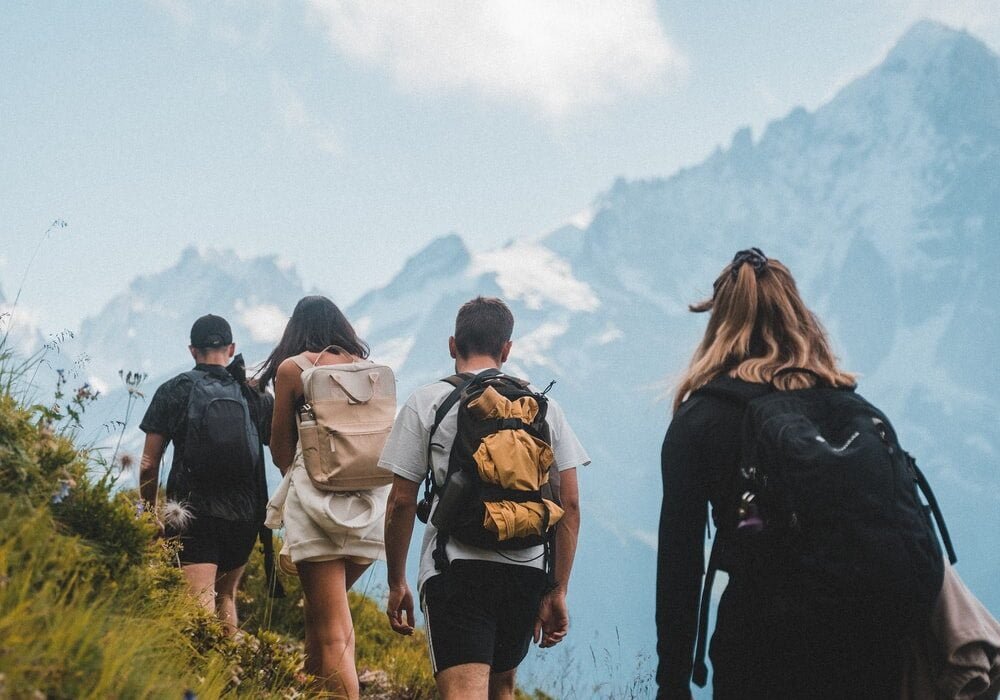Theme Definition: Recreation here refers to non-motorized activities (wheelchair sports excepted) that do not harm the environment. This Theme emphasizes activities that take place outdoors or in natural spaces, the creation and use of parks, pathways, and nature trails. The Theme of Recreation highlights the importance of creating opportunities for people to connect with nature, and mindfully planning greenspaces that connect people to nature in both tranquil and active ways.
Suggested Sub-Themes: non-motorized sports such as hiking, skating, or canoeing, organized outdoor sports, carbon offsets for sports-related travel, access to natural spaces.
Examples of programs for sustainable recreation:
- Skating between towns and cities on the Zuyder Zee in the Netherlands
- Sunday biking and roller-blading on the Parkway in Ottawa, Canada
- Family and school farm visits around many North American cities
Below, you will find a discussion paper on Recreation.
RECREATION
Recreation is an important use of green space in both urban and rural locations. If designed poorly, outdoor recreation can degrade the environment. But when we plan carefully, our leisure uses of green space can provide social and economic benefits that help to maintain natural elements of our landscapes.
Facilities for recreation are important to sustainability for a number of reasons. The buildings and other structures are visited by a significant percentage of the local citizenry. Therefore they have the potential to demonstrate sustainable practices. As well, proper location and transportation linkages will improve their benefits.
Recreation also provides social benefits that relate to the goals of a sustainable city. Health, safety and community participation are among these.
This paper discusses various aspects of these general qualities of recreation and links the topic to other Themes of Sustainability. The goal is to encourage the development of ideas and debate so that we may make our recreation system more sustainable.
GREEN SPACE
Rural green space is essential to recreational activities of both rural and urban residents. Here are some issues we might discuss:
- Campgrounds and Picnic Areas – Do they have sound environmental practices? Are they accessible to handicapped persons?
- Conservation Parks – Can they be connected by corridors to urban parks to support species biodiversity?
- Farm Properties – Can we compensate farmers for maintaining wildlife habitat? How might farm visits be increased in school and tourism programs?
- Waterways – Are recreational water vehicles and activities polluting lakes and rivers? Should emission tests be required?
Urban green space is smaller than rural but more intensively used. We might contribute our ideas in the following areas:
- Parks – How can we ensure that parks are safe and accessible by vulnerable groups such as children, seniors and the handicapped? How do parks provide habitat?
- Pathways & Trails – Can we ensure that trail use does not degrade the environment? How do these routes form part of our transportation system?
- Dog Parks – Can we add more fenced dog parks to reduce the need for dog owners to drive to the few current designated areas?
- Sports Fields – How should we make sports fields more environmentally friendly?
- Specialized Sports – Can we reduce chemical management of golf turf for the health of the environment and of players? Can horse-riding areas demonstrate sustainability?
- Beaches – Can we minimize health risks to swimmers? How can we eliminate environmental and health impacts of sewage dumping? Is it better to build and maintain indoor pools or keep our lakes and rivers clean?
- Theme Parks and Ski Hills – Are they being built and run with environmental precautions? Would government incentives or consumer pressure help them to become more environmentally friendly?
FACILITIES
Recreation centres are part of our public built environment. Here are some points we might wish to debate:
- Multiple Use Centres – Is it a more effective use of resources to provide multiple recreational activities in one location? How important is public transportation to these centres?
- Single Use Centres – How can we add on to the offerings of these centres – generally found in rural and older urban areas – to increase efficiency?
- Environmental Standards – How do we ensure sustainable operation?
- Co-location – Can we reduce cost of construction and travel by locating recreational facilities in workplaces and schools?
Outdoor facilities are important features on the landscape. We might have ideas on the following questions:
- Outdoor Pools and Splash Pads – Can we use solar water heating? Should we put more of these in poorer neighbourhoods where there is less air conditioning?
- Skateboard Parks – Can we reduce the use of concrete to save on environmental costs? Should we plant shade trees to protect skaters and spectators?
Recreation links to other Green Paper Themes. Here are some examples:
Energy – Reduce energy requirements of swimming pools.
Habitat – Integrate water management for habitat, drinking and water recreation.
Food – Favour local foods at recreation centres and sports events.
Natural Capital – Use recreational benefits to protect forest cover and wetlands.
Health & Safety – Use recreation to promote health. Promote sports involvement to reduce destructive behaviour in youth. Ensure the security of walking trails for the safety of all users.
Sense of Place – Increase access to nature to enhance environmental stewardship.
Jim Birtch / Tracy Birtch, 7 August 2009
1. Ali Tawfiq at Unsplash

